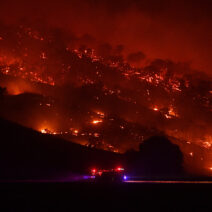Snow leopards, known scientifically as *Panthera uncia*, represent a remarkable apex predator in the harsh environments of mountain ecosystems. Their elusive and solitary nature has captivated environmentalists, researchers, and wildlife enthusiasts alike. However, snow leopards are not only fascinating creatures due to their striking appearance and behaviors, but they also serve a crucial role in maintaining the ecological balance of the high-altitude regions they inhabit. Unfortunately, the mounting threat of climate change poses significant risks to their survival, directly affecting mountain ecosystems and the myriad species they support.
The breathtaking landscapes of the Himalayas, Tibetan Plateau, and Central Asian mountain ranges, where snow leopards roam, are defined by their rugged terrain and extreme climatic conditions. These ecosystems are characterized by their unique biodiversity, including various flora and fauna that have evolved to thrive in high-altitude habitats. Snow leopards are integral to these environments as they help regulate the populations of herbivores such as ibex and blue sheep. By preying on these grazing animals, snow leopards maintain a delicate balance that ensures the health of vegetation and, consequently, the overall stability of the mountain ecosystem.
Climate change is manifesting in the form of temperature increases, altered precipitation patterns, and melting glaciers, all of which are wreaking havoc on mountain ecosystems. The loathsome specter of global warming has led to habitat loss for snow leopards, which depend on cold, inhospitable regions for their survival. As temperatures rise, the delicate alpine flora and fauna that make up their habitat may be unable to adapt, leading to a potential collapse of these ecosystems.
The phenomenon of shifting vegetation zones is already being observed in many mountain ranges. As the climate warms, plant species are migrating to higher altitudes in search of cooler conditions. This upward shift leads to the encroachment of less suitable habitats for snow leopards and their prey, thereby disrupting their hunting practices and ultimately threatening their populations. The intricate web of life in these mountainous regions is collapsing under the pressure of climate change, and snow leopards find themselves on the frontline of this battle.
The effects of climate change extend beyond direct habitat loss. With melting glaciers, the once-consistent water supply for both human populations and wildlife is becoming increasingly erratic. This unpredictability affects the availability of vegetation, endangering the herbivore populations that serve as prey for snow leopards. As their food sources dwindle, snow leopards may be forced to venture closer to human settlements in search of sustenance, creating conflicts that often bear tragic consequences.
It is essential to note that snow leopards possess a variety of adaptations that have allowed them to survive in their austere habitats. They can navigate treacherous landscapes with relative ease and possess fur that provides insulation against the biting cold. However, these adaptations are not enough to counteract the rapid changes brought forth by climate change. Snow leopards require vast territories—up to 90 square miles to thrive—making them particularly vulnerable to habitat fragmentation that climate change exacerbates.
Human-induced factors also play a role in the diminishing snow leopard populations. Poaching, driven by the illegal wildlife trade, further compounds the threats that these majestic cats face. The allure of their beautiful pelts and body parts is an ongoing crisis that undermines conservation efforts. Coupled with habitat degradation and dwindling prey, poaching jeopardizes the snow leopard’s very existence.
Efforts to conserve and protect snow leopards extend beyond mere habitat preservation. Collaborative initiatives involving local communities, conservation organizations, and governments are paramount in fostering a sustainable coexistence between humans and wildlife. One innovative approach is to engage local communities in eco-tourism, which can provide financial incentives for protecting snow leopards and their habitats. By offering educational programs and promoting awareness of these animals’ ecological significance, local populations can become stewards of their environment.
Conservation needs to be a holistic effort that integrates climate action. Strategies aimed at mitigating global warming will play a critical role in preserving mountain ecosystems. Reducing greenhouse gas emissions, advocating for renewable energy, and enhancing carbon sequestration through reforestation initiatives are vital steps that can help combat climate change and, consequently, protect the snow leopards’ habitats.
Furthermore, research and monitoring programs aimed at understanding snow leopard behavior and population dynamics must be prioritized. Utilizing advanced technologies such as satellite collars and camera traps can provide invaluable data to inform conservation efforts. Engaging in international collaborations can facilitate knowledge sharing and resource pooling, essential for addressing the transboundary crises that affect these magnificent creatures.
The plight of the snow leopard serves as a poignant reminder of the fragility of mountain ecosystems in the face of climate change. As keystone species, snow leopards are indicators of the health of their habitats. Protecting them is not merely an issue of preserving a beautiful animal; it reflects a larger commitment to sustaining complex ecological networks and ensuring that both wildlife and human communities can thrive together in harmony.
In sum, snow leopards exemplify the intricate ties that bind species to their environments. In the battle against climate change, it is critical to recognize the repercussions of inaction, as these cascading effects can lead to a disappearance of both species and habitats. A comprehensive, multi-faceted approach to conservation is imperative. Only through collective and sustained efforts can we hope to shield these magnificent cats and the fragile ecosystems they inhabit from the dire consequences of a warming planet.






